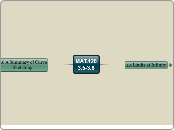MAT.126
3.5-3.6
3.5 Limits at Infinity
Determine (finite) limits at infinity
"End behavior"
Definition
Determine the horizontal asymptotes, if any, of the graph of a function
Definition
Behavior
Theorem 3.10
Limits at Infinity
Indeterminate Forms
Guidelines for Rational Functions
Functions can have different horizontal asymptotes to the right and the left
Determine infinite limits at infinity
Definition
3.6 A Summary of Curve Sketching
Analyze and sketch the graph of a function
Useful concepts
Guidelines
Slant Asymptotes
Polynomial Functions
